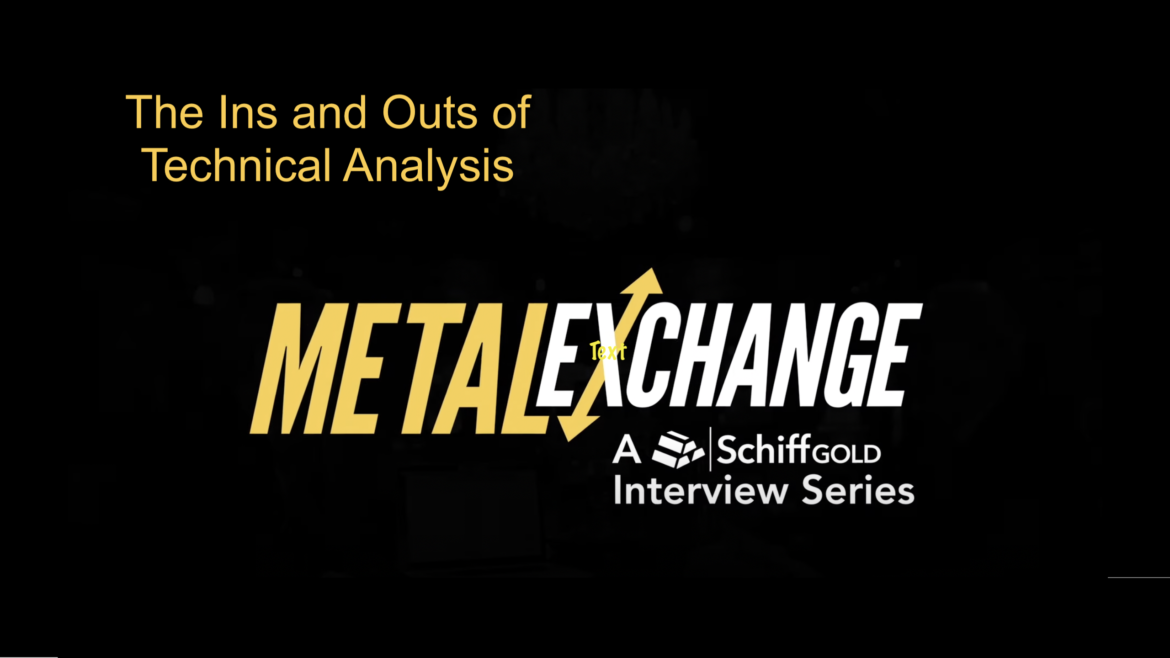Gold has all the potential to go unprecedentedly high. But silver will be gold on
Site:
Precious metals news
 Q2 GDP Revised Higher To -0.6%, As Price Index Soars To Highest Since March 1981
Q2 GDP Revised Higher To -0.6%, As Price Index Soars To Highest Since March 1981Aug 25, 2022 - 06:25:56 PDT
it was notable that for Q2, the BEA revised the GDP number which came in well above what it reported in its preliminary, first estimate and also what Wall Street expected, as the economy shrank "only" 0.6% in Q2, an improvement to the -0.9% reported initially and better than the -0.7% consensus expectation. Still, the data confirms that for all intents and purposes, the US remains in a technical recession.
Gold climbed for a third day on a weaker dollar, with traders waiting for more US economic data ahead of a key speech by Federal Reserve Chair Jerome Powell...
The number of Americans filing for jobless benefits for the first time dropped to 243k last week, down very modestly from a revised lower 245k the prior week (and better than the 252k expected). The 4-week average resumed its uptrend...
Aug 25, 2022 - 05:51:06 PDT
It looks like The Fed will have to expand the M2 Money supply to pay for “Billions Biden’s” spending spree.
Guggenheim Partners Chief Investment Officer Scott Minerd is warning investors away from junk bonds and stocks because slowing economic growth and higher interest rates likely will produce deeper losses in risk markets.
China stepped up its economic stimulus with a further 1 trillion yuan ($146 billion) of measures to bolster growth and curb the fallout of repeated Covid lockdowns and the crisis in the property market.
The Bank of Japan must maintain massive monetary stimulus and its dovish policy guidance until wages show clearer signs of increasing, one of its board members said, reinforcing the central bank's outlier status in a global wave of monetary tightening.
Aug 25, 2022 - 05:38:34 PDT
Ecb's Christine Lagarde, In Interview With Madame Figaro: We Can No Longer Rely Exclusively On The Projections Provided By Our Models – They Have Repeatedly Had To Be Revised Upwards Over These Past Two Years
The ECB raised interest rates by 50 basis points to zero last month as inflation fears mounted, surprising investors with an unexpectedly large hike after the central bank had guided for a smaller, 25 basis point move. "Continued anchoring of inflation expectations was dependent on the Governing Council acting decisively on the worsening inflation outlook."
 Central Bankers Head to U.S. Mountains With a Bad Case of Inflation Reflux
Central Bankers Head to U.S. Mountains With a Bad Case of Inflation RefluxAug 25, 2022 - 05:33:38 PDT
Much of the world is facing the fastest price growth since the early 1980s, raising fears of a repeat of that era's wage-price spiral phenomenon that required double-digit interest rates - and painful recessions - to restore price stability.
Aug 25, 2022 - 05:31:36 PDT
Investors crave clarity. Yet for a variety of reasons, Powell is unlikely to satisfy them. Ambiguity is more likely. Investors hoping Powell will tell the (Jackson) whole story are likely to be disappointed.
 Powell’s Jackson Hole Message Will Require a ‘Delicate Balance’: Goldman Sachs Economist Jan Hatzius
Powell’s Jackson Hole Message Will Require a ‘Delicate Balance’: Goldman Sachs Economist Jan HatziusAug 25, 2022 - 05:21:51 PDT
“We expect Powell to reiterate his case for slowing the pace of tightening, while also stressing that the FOMC remains committed to bringing inflation down and that policy decisions at upcoming meetings—including in September—will depend on incoming data,” economists at Goldman Sachs led by Jan Hatzius wrote in a note on Tuesday. “This will require striking a delicate balance.”
Gold saw the largest delivery volume in 2022 with 33,593 contracts delivered so far and 244 remaining in open interest. Since 2020, only December and February last year recorded larger volumes.
An audacious communications campaign from Democrats in Washington is currently underway that is attempting to convince the public that:
Over the last several months, you may have noticed a new series of articles with a data-driven focus here at SchiffGold. In this Metal Exchange interview, host Mike Maharrey talks to the man behind those posts.Mike and Tony dig into the ins and outs of technical, data-driven analysis and how it can expand our understanding of the gold and silver markets.
 U.S. SURGING POWER BILLS & COLLAPSE OF GREEN ENERGY INSTALLATIONS: Americans Now Paying The Highest Power Bills Ever
U.S. SURGING POWER BILLS & COLLAPSE OF GREEN ENERGY INSTALLATIONS: Americans Now Paying The Highest Power Bills EverAugust 25, 2022
U.S. power bills are surging to record levels causing 20 million Americans to fall behind on their payments. And... unfortunately, this will only worsen as electricity prices continue to rise in the years ahead. Also, new U.S. wind and solar power installations have fallen considerably in the first half of 2022...
Central banks continue to make a strong case for higher gold prices. In the second quarter of 2022, they remained active buyers of the precious metal. This could be one of the biggest catalysts to send the price of gold higher to $3,000 per ounce.
 Money Does Matter: The End of the Gold Standard Led to a Lower Standard of Living
Money Does Matter: The End of the Gold Standard Led to a Lower Standard of LivingAug 24, 2022 - 13:09:09 PDT
On August 15, 1971, Richard Nixon announced that the US dollar (USD) would no longer be redeemable in gold. This was supposed to be temporary. And yet, 51 years later, here we are. The gold standard was gradually destroyed in the twentieth century.
 Jerome Powell’s Dilemma: What if the Drivers of Inflation Are Here to Stay?: WSJ
Jerome Powell’s Dilemma: What if the Drivers of Inflation Are Here to Stay?: WSJAug 24, 2022 - 12:44:15 PDT
Central bankers worry that the recent surge in inflation may represent not a temporary phenomenon but a transition to a new, lasting reality. To counter the impact of a decline in global commerce and persistent shortages of labor, commodities and energy, central bankers might lift interest rates higher and for longer than in recent decades—which could result in weaker economic growth, higher unemployment and more frequent recessions.
I struggle w/ Chairman Powell's statement...given he wanted inflation, took FFR% to ZIRP, floored Fed purchasing of MBS on 3 separate occasions...each time w/ significant impact on RE prices (basis of inflation). Sooooo...BS?






















